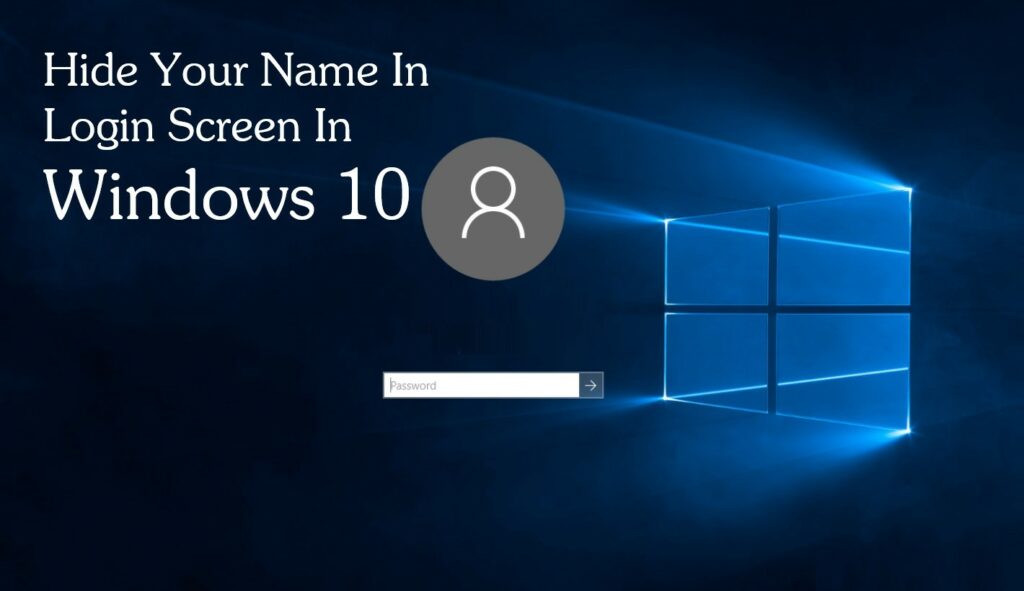Mastering Privacy: A Comprehensive Guide on How to Hide Your Name on the Login Screen in Windows 10

Introduction
Windows 10, a widely used operating system, offers users a plethora of customization options to enhance their computing experience. One aspect of personalization involves privacy, and many users may wish to conceal their name on the login screen for added security or discretion. This comprehensive guide will take you through the step-by-step process of hiding your name on the login screen in Windows 10, ensuring that your personal information remains safeguarded.
Section 1: Understanding User Privacy on Windows 10
1.1 The Significance of Privacy
Privacy is a fundamental concern for many users, and Windows 10 recognizes the importance of providing customization options to meet individual preferences.
1.2 Why Hide Your Name on the Login Screen?
Hiding your name on the login screen can be beneficial for those who share a computer or simply desire an additional layer of privacy. By concealing personal information, users can mitigate potential security risks.
Section 2: Logging into Windows 10
2.1 Standard Login Screen
Upon booting or waking your computer, the standard login screen displays your account name and possibly a profile picture.
2.2 Microsoft Account vs. Local Account
The login screen will differ based on whether you use a Microsoft account or a local account. Microsoft accounts may display your email address.
Section 3: Hiding Your Name on the Login Screen
3.1 Method 1: Local Group Policy Editor
- Press
Win + Rto open the Run dialog. - Type
gpedit.mscand press Enter to open the Local Group Policy Editor. - Navigate to
Computer Configuration -> Windows Settings -> Security Settings -> Local Policies -> Security Options. - Look for “Interactive logon: Do not display last user name” in the right pane.
- Double-click on it, select “Enabled,” and click OK.
3.2 Method 2: Registry Editor
- Press
Win + Rto open the Run dialog. - Type
regeditand press Enter to open the Registry Editor. - Navigate to
HKEY_LOCAL_MACHINE\SOFTWARE\Microsoft\Windows\CurrentVersion\Policies\System. - Create a new DWORD value named
DontDisplayLastUserName. - Double-click on it, set the value to
1, and click OK.
3.3 Method 3: Command Prompt
- Press
Win + Xand choose “Command Prompt (Admin)” or “Windows PowerShell (Admin).” - Type
reg add "HKLM\SOFTWARE\Microsoft\Windows\CurrentVersion\Policies\System" /v DontDisplayLastUserName /t REG_DWORD /d 1 /fand press Enter.
Section 4: Checking the Changes
4.1 Reboot Your Computer
After applying any of the methods, restart your computer to see the changes on the login screen.
4.2 Verifying the Hidden Name
The login screen should now conceal your name or the last signed-in user, enhancing privacy.
Section 5: Reverting Changes
5.1 Local Group Policy Editor
If you used the Local Group Policy Editor:
- Open the Local Group Policy Editor.
- Navigate to the same location but set “Interactive logon: Do not display last user name” to “Disabled” or “Not Configured.”
5.2 Registry Editor
If you used the Registry Editor:
- Open the Registry Editor.
- Navigate to the same location and delete the
DontDisplayLastUserNameDWORD value.
5.3 Command Prompt
If you used Command Prompt:
- Open Command Prompt as an administrator.
- Type
reg delete "HKLM\SOFTWARE\Microsoft\Windows\CurrentVersion\Policies\System" /v DontDisplayLastUserName /fand press Enter.
Section 6: Best Practices for Privacy on Windows 10
6.1 Account Security
Ensure your account has a strong password and consider enabling two-factor authentication for additional security.
6.2 Regular Updates
Keep your Windows 10 system updated to benefit from the latest security features and patches.
6.3 Limited Account Sharing
Limit sharing your computer account credentials to trusted individuals to maintain control over your system.
Section 7: Troubleshooting and FAQs
7.1 Changes Not Reflecting
If the changes don’t take effect, ensure that you followed the steps correctly and restart your computer.
7.2 Impact on Other Users
Hiding your name on the login screen only affects the specific account for which you applied the changes. Other user accounts remain unaffected.
Conclusion
Mastering the art of concealing your name on the login screen in Windows 10 is a straightforward yet impactful customization that contributes to your overall privacy and security. By following the step-by-step methods outlined in this guide, you can navigate the settings of your operating system with confidence, ensuring that your personal information remains under your control. Windows 10’s flexibility empowers users to tailor their computing experience, and the ability to hide your name on the login screen is a valuable addition to your privacy arsenal. As you implement these changes, you take a proactive step towards fortifying your digital space and embracing a more personalized computing environment. Happy computing!




